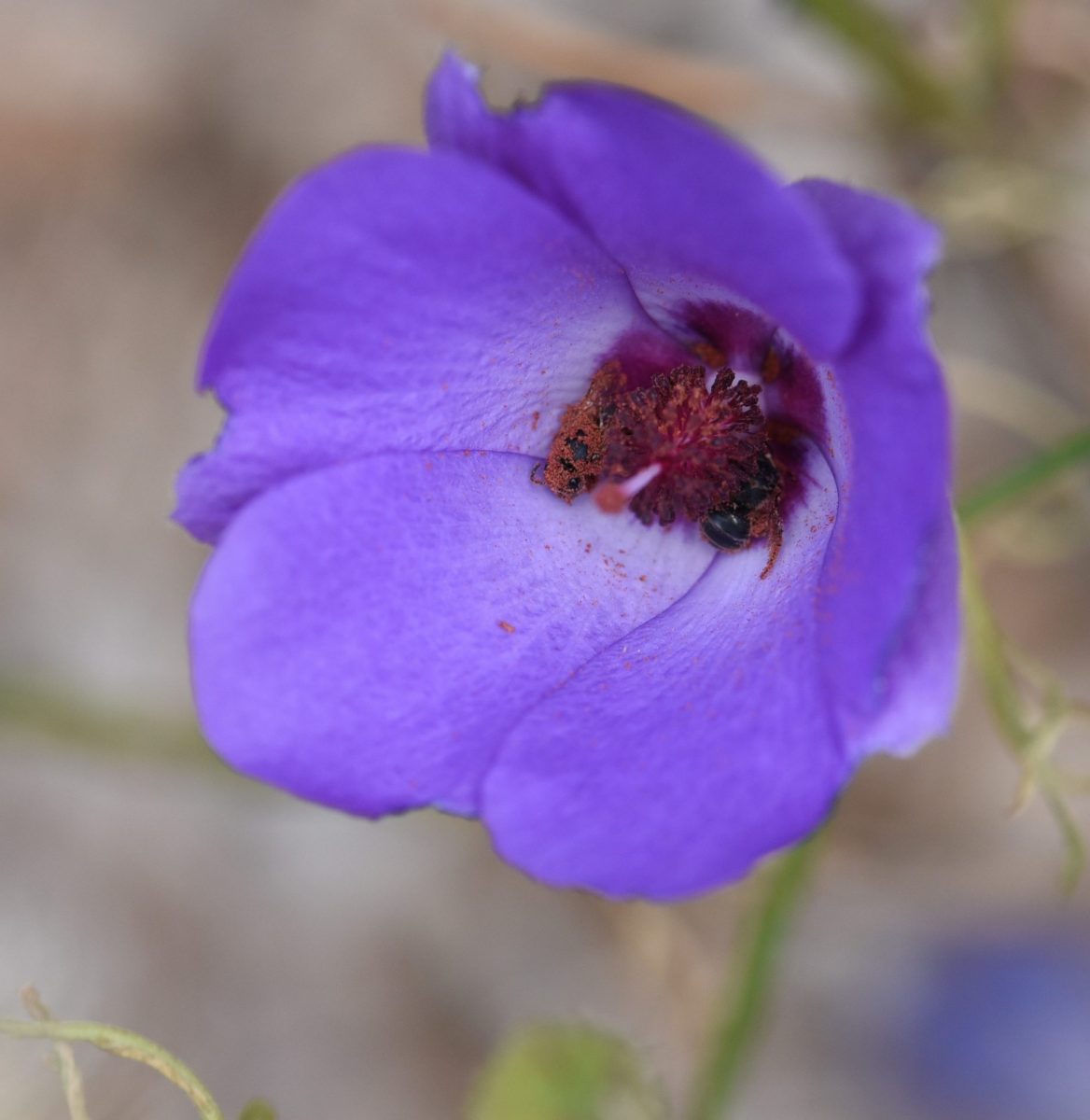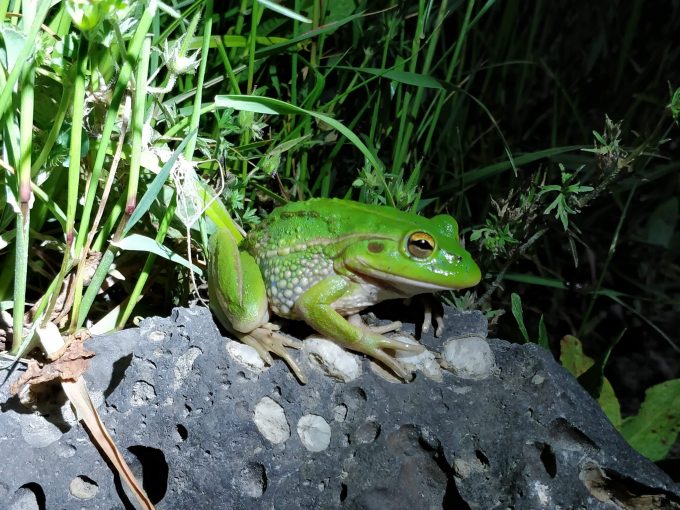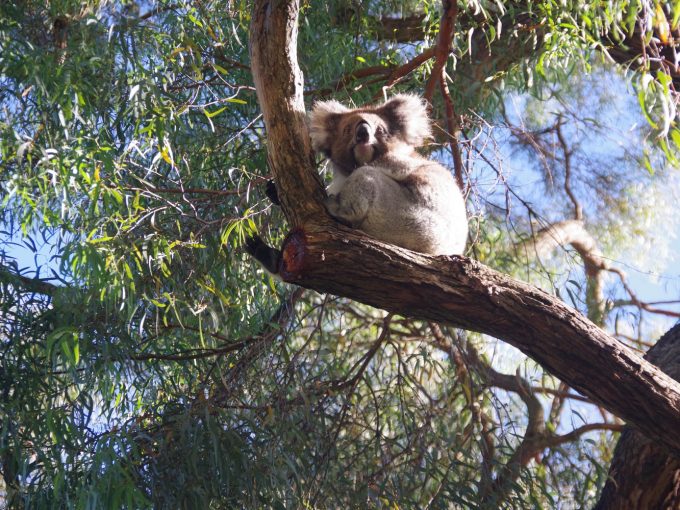There is a growing understanding that bees are crucial to food security, biodiversity and a healthy environment, but bees are much more than stripey, hive-dwelling, honey-makers. This World Bee Day, open your eyes to the rich world of bees!
PhD candidate at ICON Science, Katherine Berthon, is currently researching plant–insect relationships, with the goal of producing research to inform design guidelines for enhancing biodiversity in urban greenspaces.
Katherine’s study included a year-long observation study of garden beds in City of Melbourne, deploying experimental “phytometres” in Munich and metabarcoding pollen, or as Katherine describes it “seeing what insects prefer by looking at their ‘plates’ after being to the buffet”. But it was a different yellow-and-black-striped animal that first drew Katherine to this area of conservation.
Why bees? What drew you to this area of research?
I have always loved the environment and come from a long lineage of amazing gardeners. I grew up in the country and was very privileged to have grown up mostly playing outside, learning and interacting with nature. As I matured, that love and compassion for nature led to a want to conserve the natural world and its amazing animals, particularly tigers, so I started a degree in conservation biology.
As I learned more about the pressures on biodiversity, I realised that protecting habitat was really crucial to promoting species survival, and no process is more threatening than city expansion, both from a pure land-grab and a consumption-of-resources perspective.
My relationship to bees began as a practicality – bees represent a win–win for increasing nature in cities and providing pleasant amenity to people through increasing flowers. As I spent time observing bees to seek out their preferences I became enamoured with their personalities and habits: the honeybee that flies like a drunkard landing clumsily on flowers; small zippy solitary bees that are easily spooked but will peer at you from behind flowers with white faces, and crawl determinedly down tubular flowers that they weren’t supposed to be able to reach with their short tongues; and bumblebees that fly like blimps in high wind; or sleepy male bees covered in pollen blankets in flowers, that flick their leg lazily at your when you prod them like it’s too difficult to wake up yet.

You’ve mentioned that you were initially drawn to conservation science because of tigers. Can you explain a little about the importance of biodiversity and conserving insects and animals as part of climate action more broadly?
These are two separate aspects of reasons for conservation, but there are big win–wins for preserving nature and abating climate change. We know that nature-based solutions can help mitigate the impacts of climate change but there are also mechanisms for carbon storage that are disrupted when we remove nature, exacerbating the climate crisis.
As Edward O. Wilson said, insects are “the little things that make the world go round”, they are the little invisible doers that regulate our ecosystems, turn over soil, disperse seeds, pollinate crops and many, many other often unappreciated services that enable resilient and functioning ecosystems that we rely on. Many species of birds, lizards and mammals rely on insects as food and these animals wouldn’t be there without insects, either.
How did you come to do your PhD with ICON Science?
I saw Sarah [Bekessy, lead of ICON Science] give a talk at an Ecological Society of Australia conference the year before I started a PhD and she talked about her work on biodiversity-sensitive urban design in cities. Having just finished a masters looking at the biodiversity benefits of green roofs, I was so inspired by her vision of everyday nature that was built into the urban fabric and I decided to do my PhD in her team looking at improving the design of greenspaces to support biodiversity.
Do you have a favourite bee or pollinating insect?
I tend to prefer to stay species-ambivalent (I find it hard to pick favourites) but my favourite bee is probably the one that determinedly tried to place a nest in my empty planter box as I was filling it with soil. Most solitary bees nest in the ground and it felt like a huge success that I had created a haven in my yard that she would want to use (despite it being the most inconvenient location I can think of).
Your research looks at the habits of native bees’ and honeybees – do these bees compete and is it important to prioritise native bees?
There is a large overlap in the diet of native bees and honeybees, but the latter often have the competitive advantage because they work together in hives and can quickly deplete local resources leaving nothing for our local bees. There is some great work looking directly at this question from my colleague Kit Prendergast in WA, showing that where there are more honeybees, there are fewer native bees.
My research focuses on how we can choose plants that allow for our native bees to have a competitive upper hand. We can do this by picking flowers that native bees prefer and forage on more than honeybees, and there are some plants, like native bluebells (Wahlenbergia), that honeybees don’t use at all, but native bees will. We also need to just provide lots more resources because an overabundance of flowers helps everyone, and make sure appropriate nesting sites are available because that will give native bees ready access to the resources we provide.

What do you wish people new about bees?
That there are SO many different types! Many more than just honeybees, which aren’t native to Australia and can be antagonistic to both native bees and possums and birds by stealing hollows. Most bees don’t live in hives, they nest in holes in loose soil, clay riverbanks or in wood; most of them are tiny, are often mistaken for zippy flies; they can be blue, they can be vibrant red, or dusty brown, or sleek black with yellow highlights; and some of them (mostly males) will sleep in flowers overnight.
We do have some native bees that make honey, but only a teaspoon per year – they are called sugarbag bees, are stingless and only live in NSW and above on the east coast (it’s too cold in Victoria).

For those of us with gardens or balconies, how should we be encouraging or supporting bees?
Plant flowers, particularly native plants. Brachyscome (native rock daisies), Wahlenbergia (native bluebells), native geraniums (Pelargonium sp.) or Chrysocephalum (Yellow Buttons) are their favourites.
If you have a garden, leave some loose and low nutrient soil in a shady spot, plant low native shrubs and you will be surprised how quickly native bees may want to nest in your garden (I certainly was!) You can also put out a bee hotel for solitary bees to nest in. (Make don’t buy! Commercial varieties don’t suit our smaller bees. See https://www.aussiebee.com.au/bee-hotel-building-tips.html)
What do you hope to do once your PhD is completed?
I want to use my career to be an active participant in making cities greener for not just people but also the small critters and beautiful plants that call our cities home. I will continue to research how animals respond to our green interventions and how effective greenspace can be for promoting biodiversity – because (as my supervisor would say) it’s completely possible to plant a city full of useless trees unless we care about the kind of green we are using and who we are planting it for.
Katherine Berthon is part of TheInterdisciplinary Conservation Science Research Group (ICON Science), which works to better understand and manage the interactions between society and our natural environment.
Find out more about Australian World Bee Day events.
Story: Jenny Lucy





